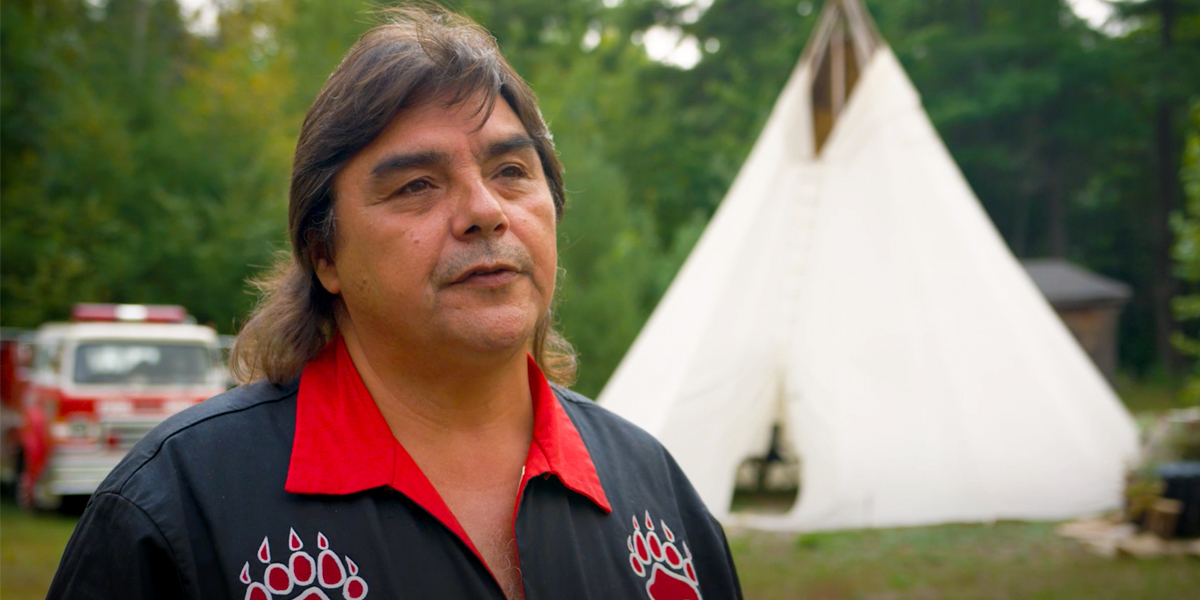Indigenous people have been left out of Canada’s economy for too long. But our future growth—and even our ability to reach net zero goals by 2050—depends on changing that

Chief Wayne McQuabbie of the Henvey Inlet First Nation in Pickerel, Ont. Nigig Power Corp. Henvey Inlet First Nation (Pickerel, Ont.)
Project: Henvey Inlet Wind | Largest on-reserve wind installation in Canada
Lay of the land
Swept by the prevailing westerly wind, Henvey Inlet First Nation is located on the northeast shore of Georgian Bay. More than a decade ago, band members and council alike started thinking of that breeze as a potential resource—and a source of revenue that could lift the Nation out of poverty. But the idea didn’t gain traction in a real way until after a regional chiefs’ meeting in 2008, when Paul Boreham, president of the wind-power company 401 Energy, was invited to speak. Boreham, whose business model favoured a 51% equity portion for local partners (mainly southern Ontario farmers), urged the First Nations to go after partnerships with equal equity. “I was intrigued,” says Chief Wayne McQuabbie. “That’s when it all started.”
Going 50-50
When Henvey Inlet’s band council went looking for partners, the only way forward would be a 50% equity stake. At one point, three companies were shortlisted, but McQuabbie says none of them were the right fit. He instructed Nigig Power’s then CEO, Ken Noble, to go after the largest renewable-energy proponents in the world. “We did a sort of beauty contest,” he says. The winner was Pattern Energy, which has renewables projects across North America and in the Caribbean. Henvey Inlet ensured its partner would respect the Nation’s treaty and inherent rights, including hunting and gathering. What it got was a partner that also gave the Nation veto powers on anything related to the land, such as safeguarding heritage sites, habitat and species at risk, and it pitched in for the community’s powwow and youth fishing derby. Pattern even helped, along with the First Nations Finance Authority, to secure bridge financing (90% financing, 10% down). “That kind of deal was unheard of,” McQuabbie says. But not impossible: “Do your due diligence, and never give up,” he advises other Indigenous communities. The agreement with Pattern was signed in 2014; the blades on the project’s 87 wind turbines started spinning in October 2019.
Windfalls of change
Churning out 300 megawatts of power, the 132-metre-tall turbines are connected to the grid, keeping the lights on in 100,000 homes. Under a 20-year renewable feed-in tariff contract with the province’s Independent Electricity System Operator, the band receives annual revenues of roughly $20 million, both from electricity generation (the amount varies depending on wind conditions) and leasing fees for the transmission line that crosses its land. At the peak of construction, some 1,000 people worked on the project, one-third of them First Nations citizens; $25 million in contracts went to local Indigenous businesses. While the finished project only requires 20 staffers for maintenance, the income from it has changed life for the Nation, with upgraded on-reserve infrastructure, including new housing, a new access road and a new ceremonial building, and more jobs. Neighbouring First Nations also receive leasing fees for the portion of the 104-kilometre transmission line on their traditional territories.
The majority of revenues are funnelled into a trust, managed by the First Nations Bank, for future generations. “But our members also receive quarterly distributions from the trust. It’s not to get rich, but to improve quality of life,” says McQuabbie. While he isn’t prepared to discuss other major initiatives—planning made possible thanks to the income from the wind project—he says the Nation is in early talks with Pattern on future revenue-generating projects. “We’re seeing the fruits of our labours now. We’re able to do more for our members,” McQuabbie says, adding that before the wind project, the Nation’s only income was from cottage leasing and government funding. “We’re done dealing with poverty.”